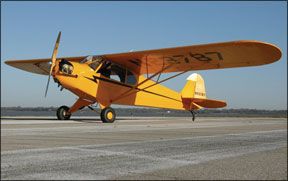I just got a call from a reader in New Jersey who sold his Baron-lucky guy-and wants to step down into an LSA to finish out his flying career. “When you get these things all tricked out with glass,” he said, “they cost $170,000.” That happens to be a significantly larger piece of change than he got for his Baron. Is this right? Or more to the point, do these kinds of prices make for a sustainable LSA industry with dozens of players? The short answer, I think, is no. Let me rephrase that: Prices like that wont sustain the large number of LSA manufacturers now in the market, but my view is that nothing will. At the U.S. Sport Aviation Expo in Sebring in January, we heard manufacturers report on how they struggled to get through 2009. Im not seeing the market forces that will change that. Yet. So the current economy will hasten what most in the industry expect: An inevitable shakeout that reduces the number of players in the field. While I hate to see any company fail, Id much rather see four or five vibrant manufacturers and a little less choice than a dozen struggling ones providing a wider range of models. While Im confident the LSA market will continue to expand incrementally, it will never be large enough to support dozens of models. (There are currently more than 70.) One trend in LSA-although not the only trend-is high-end glass with synthetic vision. Dynons new Skyview product was on display at Sebring in a Flight Design CTLS. Invoice for the package: $159,000. At $13,095 for the glass upgrade alone, its actually a good value, given that the capability rivals certified glass costing five times as much. But is it right for an LSA? That depends on what you want out of an LSA and what you plan to do with it. I recently bought a quarter share of Piper J-3 Cub, a pre-1940 version. Its panel is resplendent with an airspeed indicator, an altimeter and an oil pressure gauge. Im thrilled with that because my idea of a good day is to cruise down the beach at 500 feet with the door open, using whats left of my real vision, not the synthetic kind. For a cross country, Ill get back to a freshly printed sectional-remember them?-and maybe a portable GPS. On the hand, if youve got no time schedule to keep, its perfectly practical to fly long trips in LSAs. Just don’t get in a hurry. For that, maybe you want glass. Or maybe you don’t. In my view, for a long trip, 100 knots at 500 feet looking at the passing scenery is far preferable to 8000 feet looking at someones electronic rendering of the same reality. If youre not in the clouds, whats the point of glass? So do enough buyers share my admittedly simplistic view of LSA flight to shape the market? Frankly, were about to find out. As Tecnam, American Legend, Flight Design, Remos and others trend toward the higher end of the market, theyll learn what will sell and what wont. They have to sustain their business plans, not me. Its common knowledge that the more expensive an aircraft is, the larger the margin for the seller. And that leads to this observation: Lets not deny these companies the notion that they should make a profit or entertain the idea that they should operate break even just to carry on the glory and passion of flight. To do that is to invite a universe of barely viable companies that build marginal products supported by people who don’t or cant even answer the phone. So when I see a well-built LSA like a Legend Cub, for example, with a price tag in the mid-120s, reasonably equipped, my reaction is to think thats about right. Im less interested in the higher end all-glass models because they don’t meet my current philosophical tilt of what LSA represents. If some buyers feel differently, good for them. Thats why we have markets that offer choices. -Paul Bertorelli


